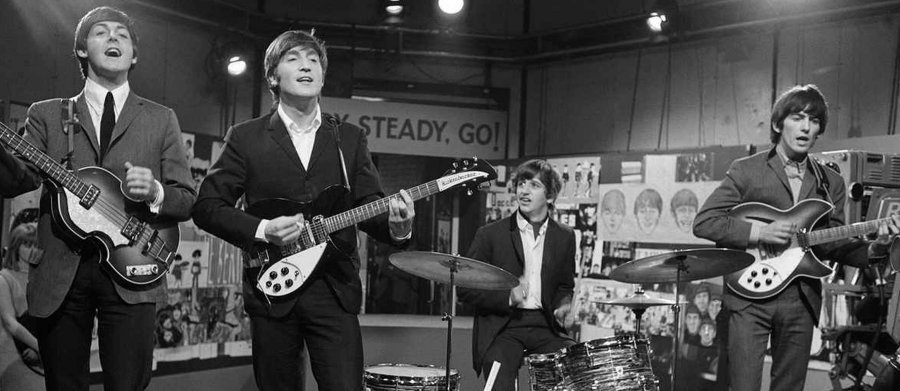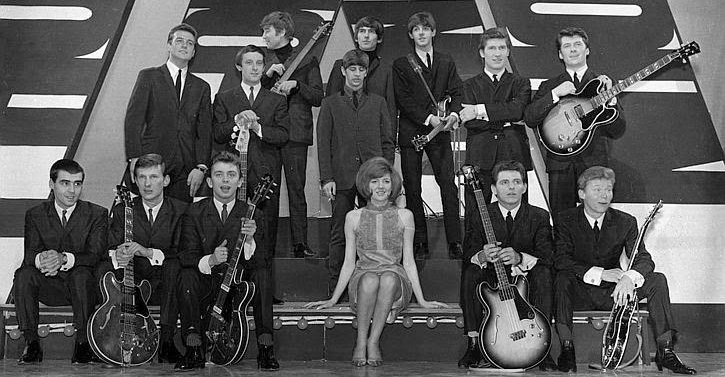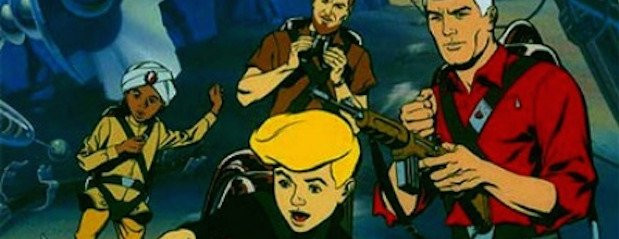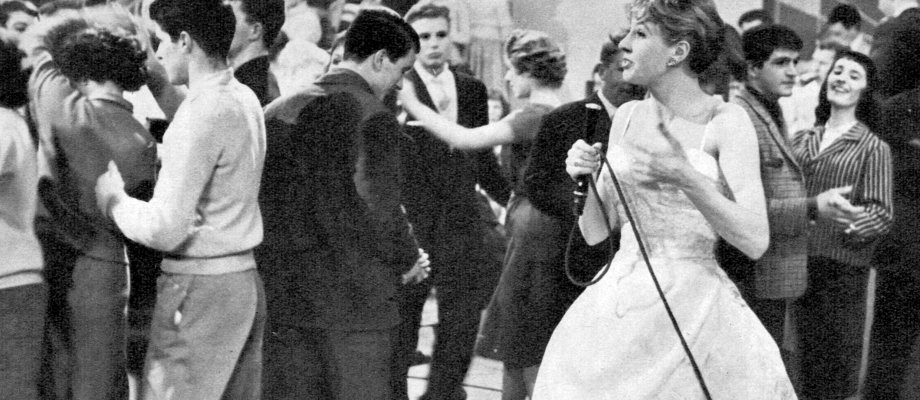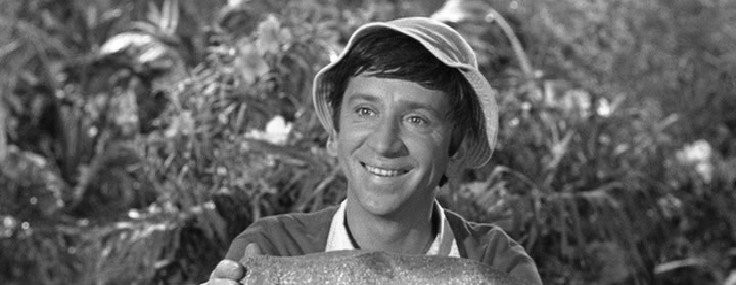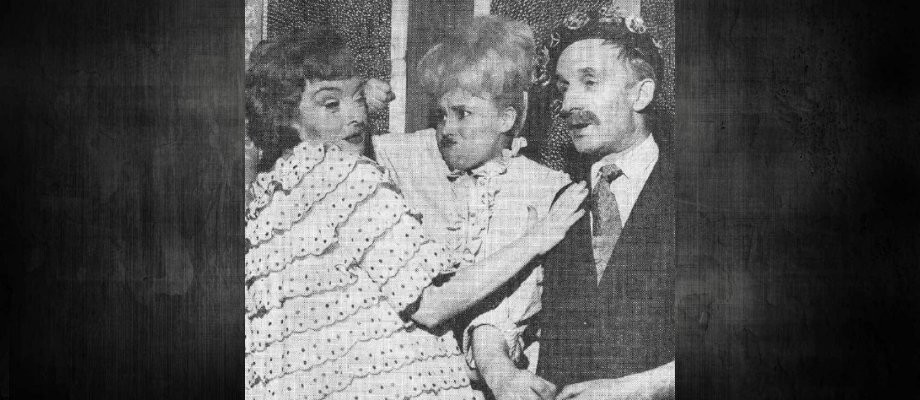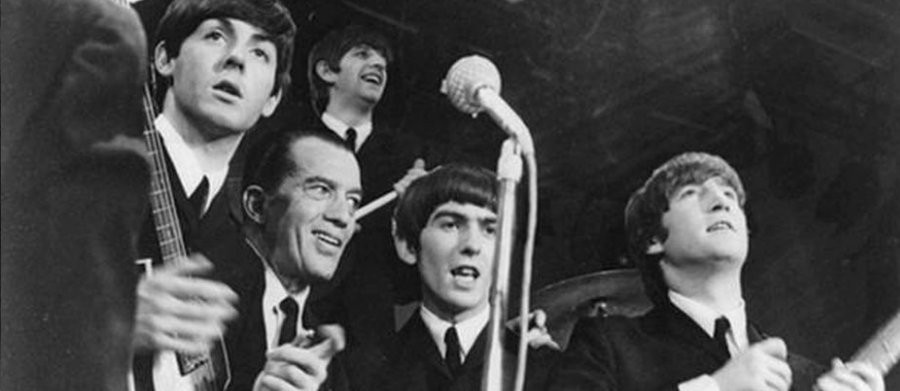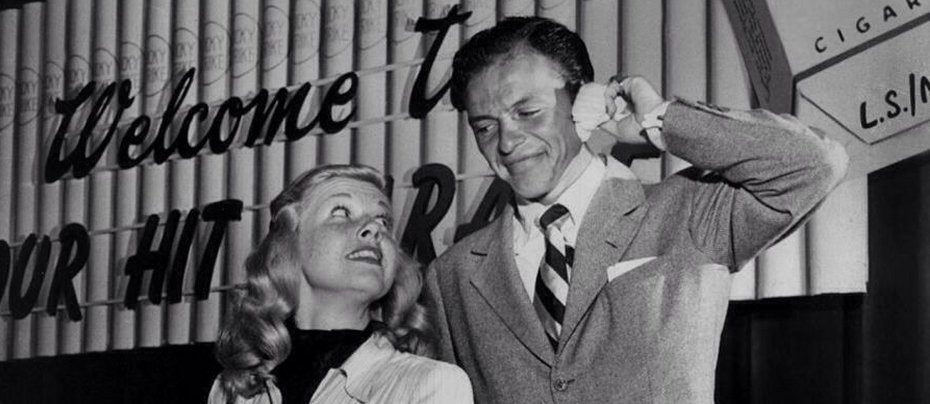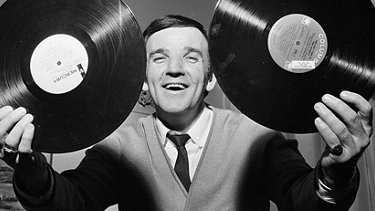
Top of the Pops
1964 - United Kingdom"It's number one...it's Top of the Pops!"
The above intro-which ushered in the first Top of the Pops show broadcast on BBC television on New Years Day 1964 referred to the top sounds in the British pop charts. For over forty years that motto could have been applied to the show itself, because Top of the Pops was without question the premier pop show on television, reaching an estimated international audience of 30 to 40 million people a week.
The longest running pop show in the history of television, first broadcast from a Manchester church hall and featuring Dusty Springfield, The Hollies, The Dave Clark Five and The Rolling Stones, came about in response to ITV's hugely successful Ready, Steady, Go and soon became the most influential music programme on the air. The show was intended to run for just six editions but there have since been in excess of 2000. That first show, broadcast on Wednesday evening at 6.36 pm, was introduced by DJs Jimmy Saville and Alan Freeman.

From the start, record executives clamoured for their artistes to appear when they realised that featuring on the show meant the difference between being at number ten in the charts or being at number one. In those days the 45-rpm single was of paramount importance to the pop stars and the demand for a new single was as often as every one to two months. TOTP provided the perfect outlet for that distribution. No matter who you were, if you were selling records you wanted to be on it, as Bill Cotton, Assistant Head of Light Entertainment for the BBC from 1962 to 1967 recalls; "After the second show I got a call from Brian Epstein asking if The Beatles latest record could be played. I said 'sure, if they turn up at Dickinson Road.' He said to me 'Do you know what will happen if The Beatles turn up at Dickinson Road?' I said 'I certainly do!'
It wasn't just British artistes that soon realised the value of appearing on Top of the Pops and in the 1960's the show featured many US stars and was also the first place that many British viewers got to see the likes of Diana Ross and the Supremes, Stevie Wonder and Marvin Gaye.
The format for TOTP was set out by the shows first producer, Johnnie Stewart (1964-73) and a set of guidelines were laid down. The most stringent rule was that artistes would only be featured if their singles were in the top 20 and going UP the charts. Artistes appearing would mime to their records, which were visibly placed on a turntable in front of that week's presenting DJ (in those days on alternate weeks) who included David Jacobs, Alan Freeman and Pete Murray). The records were 'spun' by an assistant and these included Denise Sampey (on the first programme), Diane Hefforan, and Samantha Juste who eventually married Micky Dolenz of The Monkees after they met on the show.
"Top of the Pops was a catalyst for the swinging sixties," says Robin Gibb of the Bee Gees. "It represented a great period of music." However, as the groups became more popular on an international level so it was more difficult for them to commit themselves to an appearance on the show, and so filmed inserts were added. As Keith Richards of the Rolling Stones said; "If we were touring Australia or somewhere far away we'd phone them up and say 'how about we record a film of us singing the record or larking about' and they'd say 'fine.' It was the caveman version of the later pop video that I guess we and The Beatles invented."
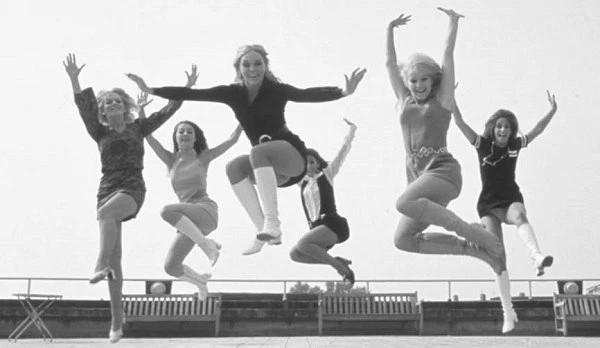
As an alternative to the filmed inserts TOTP also introduced a trio of girl dancers called the Go-Jos, led by dancer and choreographer Jo Cook. Pop star Lulu remembers seeing them for the first time; "They mostly wore white boots to the knee and short skirts and the camera would go up the skirt and it was all very risqué." In the late sixties and through most of the 1970's this was taken a step further and Pan's People, a group of six dancers led by Flick Colby became the resident dance band. Costumes became skimpier and dances more provocative as TOTP expanded its audience and moved with the times. But still the importance of the show was recognised by the record industry and the artiste's themselves and when The Beatles broke up John Lennon phoned up the show’s producer to ask if he could sing his new single, 'Instant Karma,' live on the show. He did.
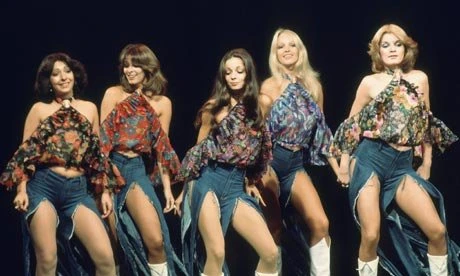
By now the show had moved from the Manchester studios to Lime Grove (in 1967) as it was becoming increasingly difficult to get the bands up north to perform due to the fact that most of them were now based in London. New faces were also introduced as presenters of the show and the likes of Stuart Henry, Emperor Roscoe, Simon Dee (briefly before being given his own show) and Kenny Everett, were all taken from their so called 'day jobs' at the newly-formed BBC Radio 1. Presenters of the show who would become household names throughout the 1970's included Tony Blackburn, Dave Lee Travis and Noel Edmonds, all of whom had begun their broadcasting careers on pirate radio stations.
The TOTP signature tune has always been a distinctive part of the show and in 1974 the original music, a percussion piece written by Johnnie Stewart and Harry Rabinowitz (replaced by another version of the same piece played by a five-piece orchestra and later a third version played by Johnny Pearson's Top Of The Pops Orchestra), was replaced by CCS performing Led Zeppelin's 'Whole Lotta Love', which was in turn replaced by Phil Lynott's 'Yellow Pearl' in 1981. Subsequent signature tunes have been written by Paul Hardcastle, Tony Gibber and Vince Clarke.
In 1976 Pan's People gave way to Ruby Flipper who were quickly followed by Legs and Co. and finally Zoo. But as Bob Dylan observed, the times were a' changin' and pop videos were growing in popularity. Top of the Pops found itself in a bit of a slump and losing its audience. But the show's strength was that it had always been able to regenerate and in the 1990's focus returned to the music itself as the format adopted a 'back to roots' policy of cramming in as many acts in the half hour show as possible. In 1998 a new version of 'Whole Lotta Love' completely re-worked by Bad Man Bad was reintroduced.
After 42 years on the air Top of the Pops had proved to be more enduring than the many varied, and often short-lived musical trends that it had chronicled. Other music programmes came and went over the decades but only this one grew and matured into the literal embodiment of a successful televisual presentation of popular music trends. But that 42nd year proved to be its last. With the BBC claiming that the show could no longer compete with the multitude of 24-hour music channels that were available on satellite and cable TV, an announcement was made on 20 June 2006 that it was time to bring the show to its "natural conclusion." On July 30 2006 the last ever edition aired to an audience of just under 4 million viewers. The show ended with Jimmy Savile turning the lights off in the empty studio.
But the brand hasn't gone completely. Top of the Pops has had a sister show called TOTP2 between 1994 and 2017 which uses archive footage from as early as the late 1960s and sandwiched between these are modern performances from modern groups. And although the series has never aired on BBC1 (confined to the 'lesser' BBC channels) with its supremely simple, yet devastatingly effective format the show continued to perfectly mirror the musical tastes of successive generations-proving that it long after its demise, it was still number one!
Seen this show? How do you rate it?
Seen this show? How do you rate it?
Published on February 8th, 2019. Written by Laurence Marcus (2002 - 2021) for Television Heaven.


